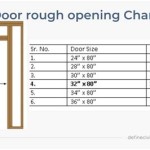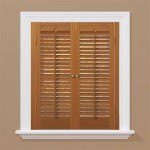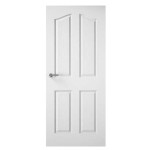Interior Trim Around Sliding Glass Doors: A Comprehensive Guide
Sliding glass doors offer a seamless transition between indoor and outdoor spaces, flooding interiors with natural light and providing convenient access to patios, decks, and backyards. However, the area surrounding a sliding glass door can often appear unfinished without proper interior trim. Interior trim serves both an aesthetic and a functional purpose, concealing gaps, protecting wall edges, and enhancing the overall visual appeal of the doorway. This article provides a comprehensive guide to understanding interior trim around sliding glass doors, exploring various types, installation techniques, and design considerations.
Understanding the Purpose of Interior Trim
Interior trim, also known as molding, performs several crucial functions. Firstly, it conceals the often-uneven gaps between the door frame and the surrounding wall. These gaps are inevitable during construction due to slight variations in measurements and materials. Trim fills these imperfections, delivering a clean and professional finish. Without trim, these gaps can become unsightly and accumulate dust and debris.
Secondly, trim protects the edges of the wall from damage. The area around a doorway is a high-traffic zone susceptible to scuffs, dents, and other forms of wear and tear. Trim acts as a buffer, absorbing impact and preventing damage to the drywall or plaster. This is especially important in homes with children or pets.
Thirdly, interior trim enhances the aesthetic appeal of the sliding glass door and the surrounding room. It adds architectural detail, defines the doorway, and can complement the overall design style of the interior. Trim can be chosen to match existing molding in the room, or it can be used to create a unique and eye-catching focal point.
Types of Interior Trim for Sliding Glass Doors
A wide variety of trim types are available, each with its own unique characteristics and applications. The best choice will depend on the desired aesthetic, the existing architectural style of the home, and the budget.
Casing: Casing is the most common type of trim used around doors and windows. It is typically a flat, rectangular piece of wood or other material, available in various widths and thicknesses. Casing is installed around the perimeter of the doorway, covering the gap between the door frame and the wall. It can be plain and simple or more ornate, depending on the desired style. Common casing profiles include simple rectangles, rounded edges, and more decorative designs with curves and ridges.
Baseboard: Baseboard runs along the bottom of the wall, where it meets the floor. While not directly around the sliding glass door frame itself, the continuation of the baseboard to the door provides a seamless transition between wall and doorway. Matching the baseboard around the door to the rest of the room creates a cohesive and polished look. Baseboard profiles range from simple flat boards to more elaborate designs with multiple layers and decorative features.
Crown Molding: Crown molding is typically installed at the top of the wall, where it meets the ceiling. It adds a touch of elegance and sophistication to a room. While not always used around sliding glass doors, crown molding can be incorporated to create a more formal and finished look, especially in rooms with higher ceilings. Crown molding is available in a wide variety of styles, from simple and understated to ornate and elaborate.
Brickmold: Brickmold is exterior trim typically used for exterior doors, but sometimes desired on the interior for a more substantial or rustic look. It is specifically designed to cover the gap between the door frame and the brick or siding on the exterior of a house. It is usually a thicker, more robust trim profile than standard casing.
Backband: Backband is a small piece of trim that is sometimes added to the inside edge of casing. It creates a more detailed and layered look, adding depth and dimension to the trim. Backband is typically used in conjunction with more ornate casing profiles.
Materials: Interior trim is available in a variety of materials, each with its own advantages and disadvantages. Wood is the most traditional and versatile material, offering a wide range of options in terms of species, grain patterns, and price. MDF (Medium-Density Fiberboard) is a more affordable alternative to wood, offering a smooth, consistent surface that is easy to paint. PVC (Polyvinyl Chloride) trim is waterproof and resistant to rot and insects, making it a good choice for areas that are exposed to moisture, such as bathrooms and kitchens. Composite materials, such as finger-jointed pine or wood-plastic composites, offer a combination of the benefits of wood and synthetic materials.
Installation Techniques for Interior Trim
Installing interior trim around a sliding glass door is a project that can be tackled by a skilled DIYer, but it requires careful planning, precise measurements, and attention to detail. Improper installation can result in gaps, uneven lines, and a less-than-professional appearance.
Preparation: Before beginning the installation, it is essential to prepare the area around the sliding glass door. Remove any existing trim, clean the surface, and ensure that the door frame is flush with the wall. Fill any gaps or imperfections with wood filler or caulk.
Measuring and Cutting: Accurate measurements are crucial for a successful trim installation. Measure the length and width of the doorway, and cut the trim pieces to the appropriate size using a miter saw. For casing, the most common cuts are 45-degree mitered cuts for the corners. Baseboard and crown molding may require more complex cuts, depending on the profile and installation method. It is always best to cut the trim pieces slightly longer than needed and then fine-tune the fit as necessary.
Attaching the Trim: Once the trim pieces are cut to size, they can be attached to the wall using finishing nails and construction adhesive. Apply a bead of construction adhesive to the back of the trim piece, and then position it against the wall. Use a nail gun or hammer to drive finishing nails through the trim and into the wall studs. Ensure that the nails are countersunk slightly below the surface of the trim. For larger pieces of trim, it may be necessary to pre-drill pilot holes to prevent the wood from splitting.
Finishing: After the trim is installed, it needs to be finished to create a smooth and seamless appearance. Fill any nail holes with wood filler, and sand the surface smooth. Caulk any gaps between the trim and the wall or door frame. Finally, prime and paint or stain the trim to match the existing décor.
Design Considerations for Interior Trim
Choosing the right style and color of trim can significantly enhance the overall aesthetic of the room. Consider the following design considerations when selecting interior trim for a sliding glass door.
Architectural Style: The style of the trim should complement the architectural style of the house. For example, a traditional home might benefit from more ornate trim profiles, while a modern home would be better suited to simpler, more minimalist designs.
Existing Molding: The new trim should coordinate with the existing molding in the room. This includes the baseboard, crown molding, and any other trim elements. Matching the style, color, and material of the existing molding will create a cohesive and harmonious look.
Door Style: The style of the sliding glass door itself should also be considered. A sleek, modern door might benefit from simple, minimalist trim, while a more traditional door could be paired with more ornate trim details.
Room Size: The size of the room can also influence the choice of trim. In smaller rooms, it is generally best to use smaller, less obtrusive trim profiles. Larger rooms can accommodate larger, more elaborate trim designs.
Color: The color of the trim should complement the wall color and the overall color scheme of the room. White trim is a classic choice that works well in most settings. However, trim can also be painted or stained to match the wall color, the door frame, or other elements in the room. Consider using a contrasting color to create a more dramatic effect.
Scale and Proportion: The scale and proportion of the trim should be appropriate for the size of the sliding glass door and the surrounding wall area. Too-small trim can look insignificant, while too-large trim can overpower the space. Aim for a balanced and harmonious look.
Creating a Focal Point: The trim around a sliding glass door can be used to create a focal point in the room. Use a bold color or a unique trim profile to draw attention to the doorway and make it a standout feature.

Patio Door Trim Options Pella

Add A Plinth Block To Door Trim For Finished Look Sliding Doors Interior Patio

Easy Diy Sliding Glass Door Catholic Home

Patio Doors Gentek Building S Us

Patio Door Repair Craftsman Trim Az Diy Guy

Patio Door Trim Options Pella

Sliding Patio Doors Great Lakes Window

Wood Trim On Sliding Glass Door And Window In Kitchen

Sliding Glass Door Interior Molding Doors

Here Are The Amazing Benefits Of Updating A Patio Door Separator
Related Posts








